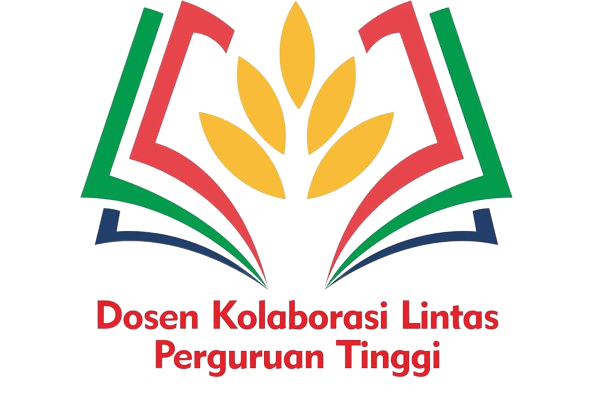Exploring Visitor Preferences and Market Potential of a Water-Based Glamping Destination: A Case Study of Danau Paisupok, Banggai Kepulauan
DOI:
https://doi.org/10.69812/itj.v2i2.134Keywords:
Ecotourism, Local-based tourism, Natural AttractionAbstract
This study explores visitor preferences and market potential for the development of a water-based glamping destination at Paisupok Lake, Central Sulawesi, an ecologically unique site characterized by exceptionally clear waters and preserved submerged logs. The research is grounded in the growing global trend toward sustainable, immersive, and comfort-oriented travel experiences, with glamping emerging as a hybrid form of eco-luxury tourism. The primary objective is to assess travelers’ motivations, preferred activities, and facility expectations to inform strategic planning for ecotourism development in the region. A quantitative-descriptive approach was applied through an online survey distributed to 200 purposively sampled respondents aged 20–45 years with prior interest in nature tourism or glamping. Data were analyzed using descriptive statistics and cross-tabulation to examine links between demographics and travel preferences. Findings indicate that key motivations include relaxation, healing, and engagement with ecotourism, with favored activities being canoeing, snorkeling, and lakeside glamping. Respondents emphasized the importance of comfort, privacy, hygiene, and scenic views, while also valuing opportunities for conservation education. Market segmentation highlights a dominant group of young professionals (24–35 years old) with middle-to-upper incomes, positioning the destination within the eco-luxury segment. The study concludes that Paisupok Lake holds strong potential for sustainable glamping tourism by integrating comfort, environmental stewardship, and educational value. Strategic implications underscore the need for tailored short tour packages, storytelling-driven digital promotion, and community-based conservation initiatives to ensure long-term competitiveness and sustainability.
Downloads
References
Bitner, M. J. (1992). Servicescapes: The impact of physical surroundings on customers and employees. Journal of Marketing, 56(2), 57–71. https://doi.org/10.1177/002224299205600205
Brochado, A., & Pereira, C. (2017). Comfortable camping: A systematic literature review of glamping. Journal of Outdoor Recreation and Tourism, 17, 1–10. https://doi.org/10.1016/j.jort.2017.01.003
Crompton, J. L. (1979). Motivations for pleasure vacation. Annals of Tourism Research, 6(4), 408–424. https://doi.org/10.1016/0160-7383(79)90004-5
Dann, G. M. S. (1977). Anomie, ego-enhancement and tourism. Annals of Tourism Research, 4(4), 184–194. https://doi.org/10.1016/0160-7383(77)90037-8
Filipe, L., Silva, R., & Almeida, A. (2023). Understanding glamping tourists: Motivations and experience expectations. Journal of Ecotourism, 22(1), 45–60. https://doi.org/10.1080/14724049.2023.2201870
Grande, K., Mendes, J., & Dinis, A. (2025). Entrepreneurship in glamping: Opportunities for sustainable tourism. Sustainability, 17(2), 224. https://doi.org/10.3390/su17020224
Groß, S., & Sand, M. (2022). From mass tourism to sustainable experiences: How glamping responds to shifting travel values. Tourism Review, 77(3), 621–635. https://doi.org/10.1108/TR-12-2021-0562
Hanafiah, M. H., Zulkifly, M. I., & Jamaluddin, M. R. (2022). The influence of glamping experience quality on destination image and revisit intention. Asia Pacific Journal of Tourism Research, 27(4), 379–395. https://doi.org/10.1080/10941665.2022.2039925
Kasjuaji, H. (2018). Karakteristik danau karst dan implikasinya terhadap pengembangan ekowisata. Jurnal Geografi dan Geologi Indonesia, 2(1), 22–31.
Kotler, P., & Keller, K. L. (2016). Marketing management (15th ed.). Pearson Education.
Lee, W. S., Lee, J. K., & Moon, J. (2019). A study on customer preferences for glamping site attributes using conjoint analysis. Journal of Tourism Sciences, 43(2), 109–125. https://doi.org/10.2139/ssrn.3456753
Lu, J., & Chi, C. G. (2021). The role of nature-based glamping experience in enhancing tourists’ well-being. Journal of Destination Marketing & Management, 20, 100610. https://doi.org/10.1016/j.jdmm.2021.100610
Mochtar Ahmad, & Nofrizal. (2009). Kualitas air danau karst dan dampaknya terhadap lingkungan mikrobiologis. Jurnal Lingkungan Tropis, 6(2), 55–64.
Pine, B. J., & Gilmore, J. H. (1999). The experience economy: Work is theatre & every business a stage. Harvard Business Press.
Prayag, G., & Hosany, S. (2014). When Middle East meets West: Understanding the motives and perceptions of young Arab travelers. Tourism Management, 40, 143–154. https://doi.org/10.1016/j.tourman.2013.05.003
Schwartz, S. H. (1994). Are there universal aspects in the structure and contents of human values? Journal of Social Issues, 50(4), 19–45. https://doi.org/10.1111/j.1540-4560.1994.tb01196.x
Suhartanto, D., Dean, D., & Kusdibyo, L. (2021). Glamping in Indonesia: What makes guests happy and loyal? International Journal of Hospitality Management, 94, 102857. https://doi.org/10.1016/j.ijhm.2020.102857
Triadi, T. (2005). Sifat kimia air danau dan pengaruhnya terhadap pelapukan kayu. Jurnal Biologi Tropis, 10(1), 65–72.
Utami, P. (2020). Preferences for light water-based activities among urban millennial travelers. Tourism and Leisure Studies, 5(2), 111–124.
Weaver, D. (2001). Ecotourism. John Wiley & Sons Australia.
Zoltan, J., & McKercher, B. (2015). Analysing intra-destination movements and activity participation of tourists through destination card consumption. Tourism Geographies, 17(1), 19–35. https://doi.org/10.1080/14616688.2014.931075
Downloads
Published
How to Cite
Issue
Section
License
Copyright (c) 2025 Evio Tanti Nanita, Rian Abid Nugroho, Mhd Try Imran Yasin

This work is licensed under a Creative Commons Attribution-ShareAlike 4.0 International License.
You are free to:
- Share — copy and redistribute the material in any medium or format for any purpose, even commercially.
- Adapt — remix, transform, and build upon the material for any purpose, even commercially.
- The licensor cannot revoke these freedoms as long as you follow the license terms.
Under the following terms:
- Attribution — You must give appropriate credit, provide a link to the license, and indicate if changes were made . You may do so in any reasonable manner, but not in any way that suggests the licensor endorses you or your use.
- ShareAlike — If you remix, transform, or build upon the material, you must distribute your contributions under the same license as the original.
- No additional restrictions — You may not apply legal terms or technological measures that legally restrict others from doing anything the license permits.















